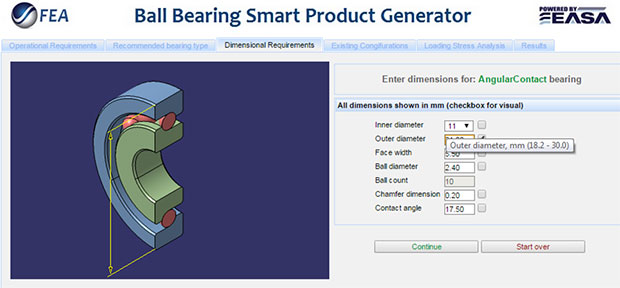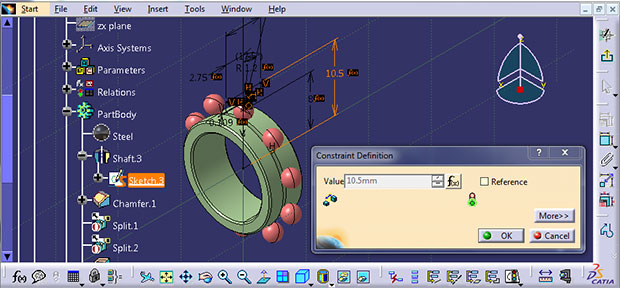
Latest News
May 1, 2015
 What would it mean to a manufacturer, if anyone who wanted to create a product design could do it per company standards, within minutes and with reduced reliance upon the company’s experts? What if the product design and simulation knowledge of the engineering experts in your organization could be tapped on-demand through the use of intelligent Web-enabled “virtual expert” applications?
What would it mean to a manufacturer, if anyone who wanted to create a product design could do it per company standards, within minutes and with reduced reliance upon the company’s experts? What if the product design and simulation knowledge of the engineering experts in your organization could be tapped on-demand through the use of intelligent Web-enabled “virtual expert” applications?
Imagine how your company’s product development processes and go-to-market strategy would change. Designers could configure products with the assurance that their designs would be engineering validated. Sales reps could engineer products, on the fly, and in front of customers based on their requirements. Junior engineers would be able to generate product designs and perform analyses without bogging down your company experts.
Intelligent Automation
Juan Betts, managing director of Front End Analytics says, “Back in the early 1900s, during the infancy of the automotive industry, one needed to have deep knowledge of how a car worked in order to drive a car. Today the automotive industry is a $1.5 trillion industry because, through intelligent automation and controls, someone who has no clue how a car works can drive a car. The engineering design and simulation industry is still in the 1900s requiring the developers of engineering models to be the same persons as the users of these models. In the same way you don’t need to be a mechanic to drive a car nowadays, our Smart Apps enable folks who are not experts to use engineering expertise to create a product design through intelligent automation methods.”
Front End Analytics helps companies transform how they create, sell and service product via the use of intelligent Web-enabled Smart Apps. These applications imbed design rules, engineering practices and experts’ knowhow, thereby allowing anyone enterprise-wide to safely create a product design.
Smart Apps have five major characteristics. They:
- Leverage the company’s existing intellectual property (rules, knowhow, previous designs, etc.)
- Work across a wide range of design changes and product families
- Speak the language of the intended user and prevent non-expert users from creating invalid designs
- Automate an entire workflow (i.e. should work for both CAD creation as well as analysis automation)
- Can be employed for different levels of model abstraction (i.e. from 1D functional-centric conceptual design to 3D parametric CAD and FEA/CFD analysis in detailed design)
To create these Smart Apps, Front End Analytics leverages the company’s existing IP and tool set (Excel spreadsheets, MATLAB scripts, in-house codes, CAD/CAE tools, databases, enterprise systems, etc.) and intelligently links them in an automation platform. A platform that Front End Analytics often uses is called EASA, a cloud-computing platform for rapid application development, process automation and enterprise-wide software accessibility.
These Smart Apps can be safely tucked away behind a company’s firewall or accessible through the web. Different Apps or functionalities within Apps can be made available via user permissions following each company’s IT policies.
The Process
Front End Analytics works closely with companies to assess their workflows, engineering challenges, design practices, expert knowhow, etc. to diagnose the best course of action that would lead to desired outcomes. “We always diagnose before we prescribe,” says Betts.
 With simplified Web-based interfaces, changing models and producing designs becomes more accessible. Image courtesy of Front End Analytics.
With simplified Web-based interfaces, changing models and producing designs becomes more accessible. Image courtesy of Front End Analytics.“We meet with companies as a neutral third party, staying focused on the facts as part of our education. Extracting the deterministic rule sets needed for the automation leads to their own discoveries about what they did and did not know,” says Mark Walker from Front End Analytics. “In the end, it’s their consensus that makes the solution successful.”
Once a company’s core design process and engineering rules are codified, various applications can be created to help streamline product development. “We make the application speak the language of the intended users across the enterprise and add intelligent controls to prevent non-expert users from creating an invalid product design,” Walker says.
Many companies begin with a small pilot and then scale up.
More Info
Subscribe to our FREE magazine, FREE email newsletters or both!
Latest News







